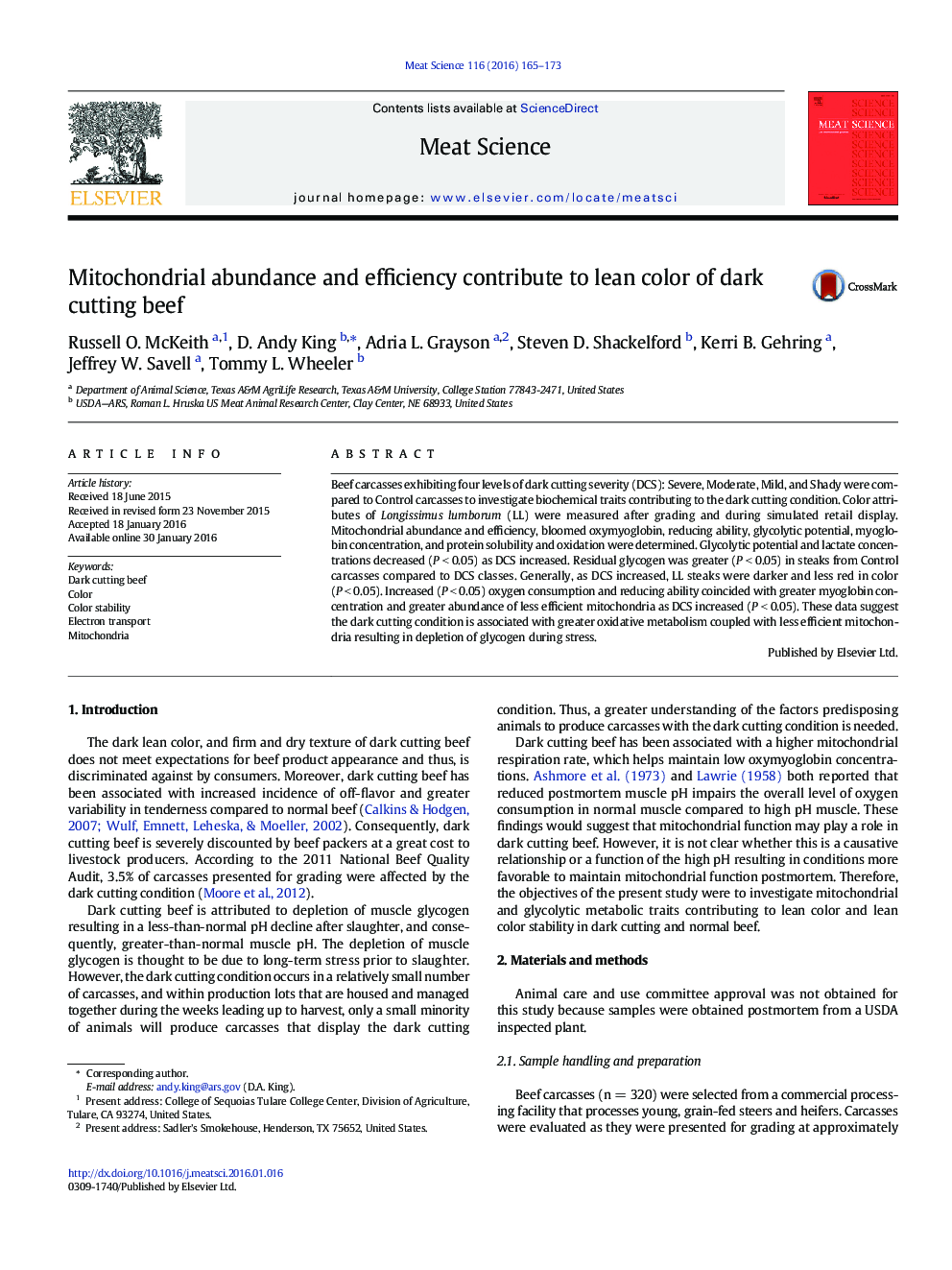| Article ID | Journal | Published Year | Pages | File Type |
|---|---|---|---|---|
| 2449537 | Meat Science | 2016 | 9 Pages |
•Mitochondrial function was examined in dark cutting beef Longissimus lumborum.•Dark cutting Longissimus lumborum had more mitochondria than controls.•Dark cutting Longissimus lumborum had less efficient mitochondria than controls.•Greater numbers of less efficient mitochondria may deplete glycogen stores.
Beef carcasses exhibiting four levels of dark cutting severity (DCS): Severe, Moderate, Mild, and Shady were compared to Control carcasses to investigate biochemical traits contributing to the dark cutting condition. Color attributes of Longissimus lumborum (LL) were measured after grading and during simulated retail display. Mitochondrial abundance and efficiency, bloomed oxymyoglobin, reducing ability, glycolytic potential, myoglobin concentration, and protein solubility and oxidation were determined. Glycolytic potential and lactate concentrations decreased (P < 0.05) as DCS increased. Residual glycogen was greater (P < 0.05) in steaks from Control carcasses compared to DCS classes. Generally, as DCS increased, LL steaks were darker and less red in color (P < 0.05). Increased (P < 0.05) oxygen consumption and reducing ability coincided with greater myoglobin concentration and greater abundance of less efficient mitochondria as DCS increased (P < 0.05). These data suggest the dark cutting condition is associated with greater oxidative metabolism coupled with less efficient mitochondria resulting in depletion of glycogen during stress.
